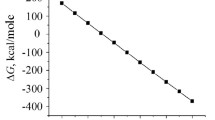Abstract
Propylene was used to fabricate boron-doped carbon coatings by low-pressure chemical vapor deposition. The effects of carbon/boron (C/B) ratio in reactants on the deposition rate, morphologies, and bonding states of the deposits were investigated. Deposition rate increased with increasing C/B ratio, when C/B ratio was less than 4.0. Then, deposition rate decreased with increasing C/B ratio. The maximum rate was 500 nm/h. SEM results showed that cross section morphologies and thickness of deposits were influenced by C/B ratio. Morphologies were compact and not-delaminated with a low C/B ratio, however nanoscale delamination occurred in the deposits with a high C/B ratio. The infiltration characteristic was also influenced by the C/B ratio. The suitable C/B ratio was 1.0–2.0 for infiltration in a T300 carbon bundle. XPS results showed that carbon content is major in the deposits with all C/B ratios. The boron contents decreased and carbon contents increased with increasing C/B ratio. B-sub-C and BC2O were main bonding states. The total contents of B-sub-C and BC2O were above 60.0 at.% with all C/B ratios.







Similar content being viewed by others
References
Naslain R, Guette A, Rebillat F, Pailler R, Langlais F, Bourrat X. Boron-Bearing Species in Ceramic Matrix Composites for Long-Term Aerospace Applications. J. Solid State Chem. 2004; 177(2):449–456 doi:10.1016/j.jssc.2003.03.005
Naslain R. Design, Preparation and Properties of Non-Oxide CMCs for Application in Engines and Nuclear Reactors: An Overview. Compos. Sci. Technol. 2004; 64(2):155–170 doi:10.1016/S0266-3538(03)00230-6
McKee DW. Borate Treatment of Carbon Fibers and Carbon/Carbon Composites for Improved Oxidation Resistance. Carbon 1986; 24(6):737–741 doi:10.1016/0008-6223(86)90183-1
McKee D W, Spiro C L, Lamby E J. The Effects of Boron Additives on the Oxidation Behavior of Carbons. Carbon 1984; 22(6):507–511 doi:10.1016/0008-6223(84)90083-6
Ehrburger P, Baranne P, Lahaye J. Inhibition of the Oxidation of Carbon–Carbon Composite by Boron Oxide. Carbon 1986; 24(4):495–499 doi:10.1016/0008-6223(86)90274-5
Derre A, Filipozzi L, Peron F. High Temperature Behaviour and Oxidation Resistance of Carbon-Boron-Nitrogen Compounds Obtained by LPCVD. J. Phys. IV, 1993; 3(3):195–202
Cermignani W, Paulson TE, Onneby C, Pantano CG. Synthesis and Characterization of Boron-Doped Carbons. Carbon 1995; 33(4):367–374 doi:10.1016/0008-6223(94)00160-2
Way BM, Dahn JR, Tiedje T, Myrtle K, Kasrai M. Preparation and Characterization of B x C1−x Thin Films with the Graphite Structure. Phys. Rev. B: Condens Matter 1992; 46(3):1697–1702 doi:10.1103/PhysRevB.46.1697
Kouvetakis J, Kaner RB, Sattler ML, Bartlett N. A Novel Graphite-Like Material of Composition BC3, and Nitrogen–Carbon Graphites. J. Chem. Soc. Chem. Commun. 1986; 24:1758–1759 doi:10.1039/c39860001758
Jacques S, Guette A, Bourrat X, Langlais F, Guimon C, Labrugere C. LPCVD and Characterization of Boron-Containing Pyrocarbon Materials. Carbon 1996; 34(9):1135–1143 doi:10.1016/0008-6223(96)00075-9
Li HJ, Li AJ, Bai RC, Li KZ. Numerical Simulation of Chemical Vapor Infiltration of Propylene into C/C Composites with Reduced Multi-Step Kinetic Models. Carbon 2005; 43(14): 2937–2950 doi:10.1016/j.carbon.2005.05.046
Vignoles, L, Langlais, F, Descamps, C, Mouchon, A, Poche, L, Reuge, N, Betrand, N, “CVD and CVI of Pyrocarbon from Various Precursors.” Surf. Coat. Tech., 188–189 241–249 (2004). doi:10.1016/j.surfcoat.2004.08.036
Luo RY. Friction Performance of C/C Composites Prepared Using Rapid Directional Diffused Chemical Vapor Infiltration Processes. Carbon 2002; 40(8): 1279–1285 doi:10.1016/S0008-6223(01)00283-4
Liu YS, Cheng LF, Zhang LT, Wu SJ, Li D, Xu YD. Oxidation Protection of Multilayer CVD SiC/B/SiC Coatings for 3D C/SiC Composite. Mater. Sci. Eng. A, 2007; 466(1–2):172–177 doi:10.1016/j.msea.2007.02.059
Wu SJ, Cheng LF, Zhang LT, Xu YD. Oxidation Behavior of 2D C/SiC with a Multi-Layer CVD SiC Coatings. Surf. Coat. Tech., 2006; 200(14–15): 4489–4492 doi:10.1016/j.surfcoat.2005.03.009
Yin XW, Cheng LF, Zhang LT, Xu YD. Oxidation Behaviors of C/SiC in the Oxidizing Environments Containing Water Vapor. Mater. Sci. Eng. A, 2003; 348(1–2): 47–53 doi:10.1016/S0921-5093(02)00644-5
Wu SJ, Cheng LF, Zhang LT, Xu YD, Zhang Q. Oxidation Behavior of 3D Hi-Nicalon/SiC Composite. Mater. Lett., 2006; 60(25–26):412–417
Wu SJ, Cheng LF, Zhang LT, Xu YD, Zhang Q. Comparison of Oxidation Behaviors of 3D C/PyC/SiC and SiC/PyC/SiC Composites in an O2-Ar Atmosphere. Mater. Sci. Eng. B2006; 130(1–3):215–219 doi:10.1016/j.mseb.2006.03.012
Wu SJ, Cheng LF, Zhang LT, Xu YD, Luan XG, Mei H. Corrosion of SiC/SiC Composite in Na2SO4 Vapor Environments from 1000 to 1500°C. Compos. Part A: Appl. Sci. Manuf. 2006; 37(9):1396–1401 doi:10.1016/j.compositesa.2005.07.010
Wu SJ, Cheng LF, Zhang J, Zhang LT, Luan XG, Mei H, et al. Tension–Tension Fatigue Damage Characteristics of a 3D SiC/SiC Composite in H2O–O2–Ar Environment at 1300°C. Mater. Sci. Eng. A 2006; 435–436(5):412–417 doi:10.1016/j.msea.2006.07.041
Acknowledgments
This work was supported by the National Science Foundation in China (No. 90405015, No. 50672076, No. 50425208, and No. 50642039, No. 50802076). This work was also supported by the Doctorate Foundation of Northwestern Polytechnical University (CX200505).
Author information
Authors and Affiliations
Corresponding author
Rights and permissions
About this article
Cite this article
Liu, Y., Zhang, L., Cheng, L. et al. Effect of C/B ratio in reactants on low-pressure CVD boron-doped carbon deposited from a BCl3–C3H6–H2 mixture. J Coat Technol Res 6, 509–515 (2009). https://doi.org/10.1007/s11998-008-9128-2
Published:
Issue Date:
DOI: https://doi.org/10.1007/s11998-008-9128-2




